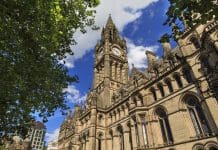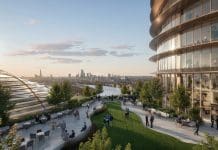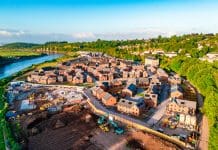Plans to create a new Museum for London and cultural destination in West Smithfield have been given the go-ahead by the City of London Corporation’s planning and transportation committee
The plans will transform a campus of dilapidated market buildings in West Smithfield, meaning the new Museum for London is one important step closer to opening the doors of its new home in 2024.
The new museum project will comprise a world-class learning offer that aims to engage every London school child to having 24-hour access.
Historic preservation
The approved plans mean a secure, sustainable future for the historic market buildings that make up the site, most of which date back to the Victorian Era and have fallen into disrepair.
Much of the historic fabric of the buildings will be preserved to create cavernous and atmospheric spaces both above and below ground, capable of hosting a broader range of displays, exhibitions, learning activity and events.
One of the largest cultural projects happening anywhere in Europe – the museum will play a vital role in the London economy.
The new Museum of London will play a key role in the City of London Corporation’s ‘Culture Mile’ vision, a transformational programme to create a vibrant cultural area in the north-west corner of the city, which will significantly contribute to the wider revitalisation of Smithfield.
The planning milestone comes after four years of detailed work by the Museum of London’s design team to bring forward the plans, which has been led by architects Stanton Williams and Asif Khan, working together with conservation architect Julian Harrap.
During this time, the Museum of London has engaged with thousands of stakeholders including the local community, visitors and Londoners on the plans and has received overwhelming support for the project.
‘Once-in-a-generation opportunity’
Sharon Ament, director of the Museum of London, said: “We are over the moon with today’s decision, which takes us one giant step closer to achieving our vision and moving forward with this ambitious, once-in-a-generation opportunity.
“The museum will be so much more than what you see today at our existing site. This is all because the market buildings themselves enable us to create a set of galleries, show spaces, meeting rooms, exhibitions, places to eat, to learn, to meet friends, to work, to delve into London’s past, present and even to imagine possible futures.
“We will open these extraordinary buildings bringing them back into public use, at a time when Londoners are yearning to better understand who we are and how our city has developed.
“We will reach every single school child in the city and share more of our incredible stories rooted in the London Collection – including the most pertinent issues that Londoners are facing today.
“In these extraordinary and challenging times we all now find ourselves in, we believe it is now more important than ever to help people connect with and understand both their past and their future.”
Ament added: “We have been amazed by the amount of support we have received, from our closest partners to international enthusiasts and of course from Londoners themselves.
“I would like to pay a special thanks to the City of London Corporation and the Mayor of London for their unprecedented support and to the generosity of our Founding Partners; the Goldsmiths’ Company and its affiliated Charity, and the Linbury Trust.”
The Mayor of London, Sadiq Khan, commented: “The Museum of London’s new home will be a spectacular addition to our capital’s cultural offering.
“Through its innovative exhibitions, it will tell the story of London’s history and diversity in a previously unseen way, inspiring a whole new generation of Londoners and visitors to our capital.”
Sensitive revitalisation
Alastair Moss, chair of the planning and transportation committee at the City of London Corporation, said: “The Museum of London’s plans for Smithfield Market represent a fantastic opportunity to sensitively revive these buildings and bring them back into use as an exciting and accessible destination for all of the City’s workers, residents and visitors to enjoy.
“Along with the promise of being an exceptional attraction in its own right, the museum is expected to bring with it many substantial economic, environmental, cultural and social benefits to the area.
“The new Museum of London will also play a pivotal role in Culture Mile, a vibrant cultural and creative area in the north-west corner of the Square Mile between Farringdon and Moorgate.”
Asif Khan, said: “In front of the Museum of London Docklands stood a statue of slaver Robert Milligan. Just over a week ago it was removed. The recent protests across the globe for equality and respect of black lives, have called into question how we are taught our history and how then we understand our present.
“It feels we are finally at a turning point, and to design a new museum at this moment, particularly one inside a Victorian market hall, is a great responsibility. It demands from us a vision of how we should shape our future city and citizenry.”
The Museum of London will now continue to work closely with the City of London Corporation to ensure that the necessary legal agreements are in place before works start next year.
The site for the new Museum of London covers the General Market, Poultry Market and a suite of buildings known as The Annexe, which includes the Fish Market, Red House and Engine House. A Listed Building Consent Application for the Grade II-listed Poultry Market has also been secured.


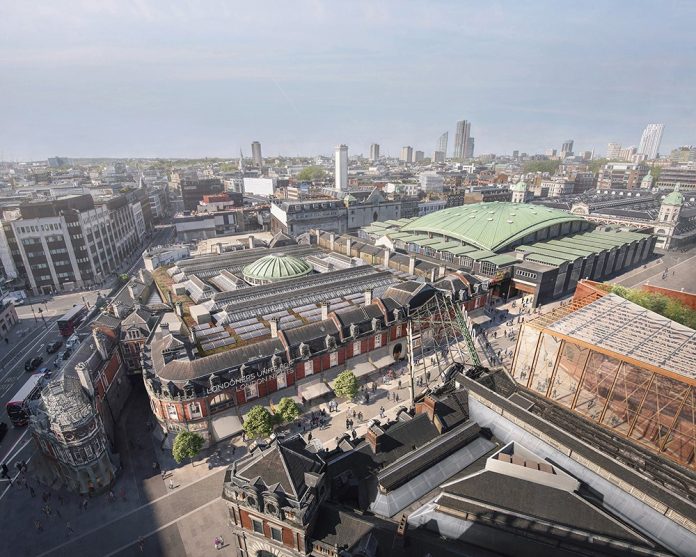



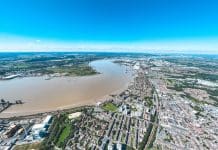

![[VIDEO]Government launches new online appeal service for local planning authorities Group of young coworkers using computers in their group office, representing the new online appeals service](https://www.pbctoday.co.uk/news/wp-content/uploads/2025/12/iStock-2191280160-218x150.jpg)
